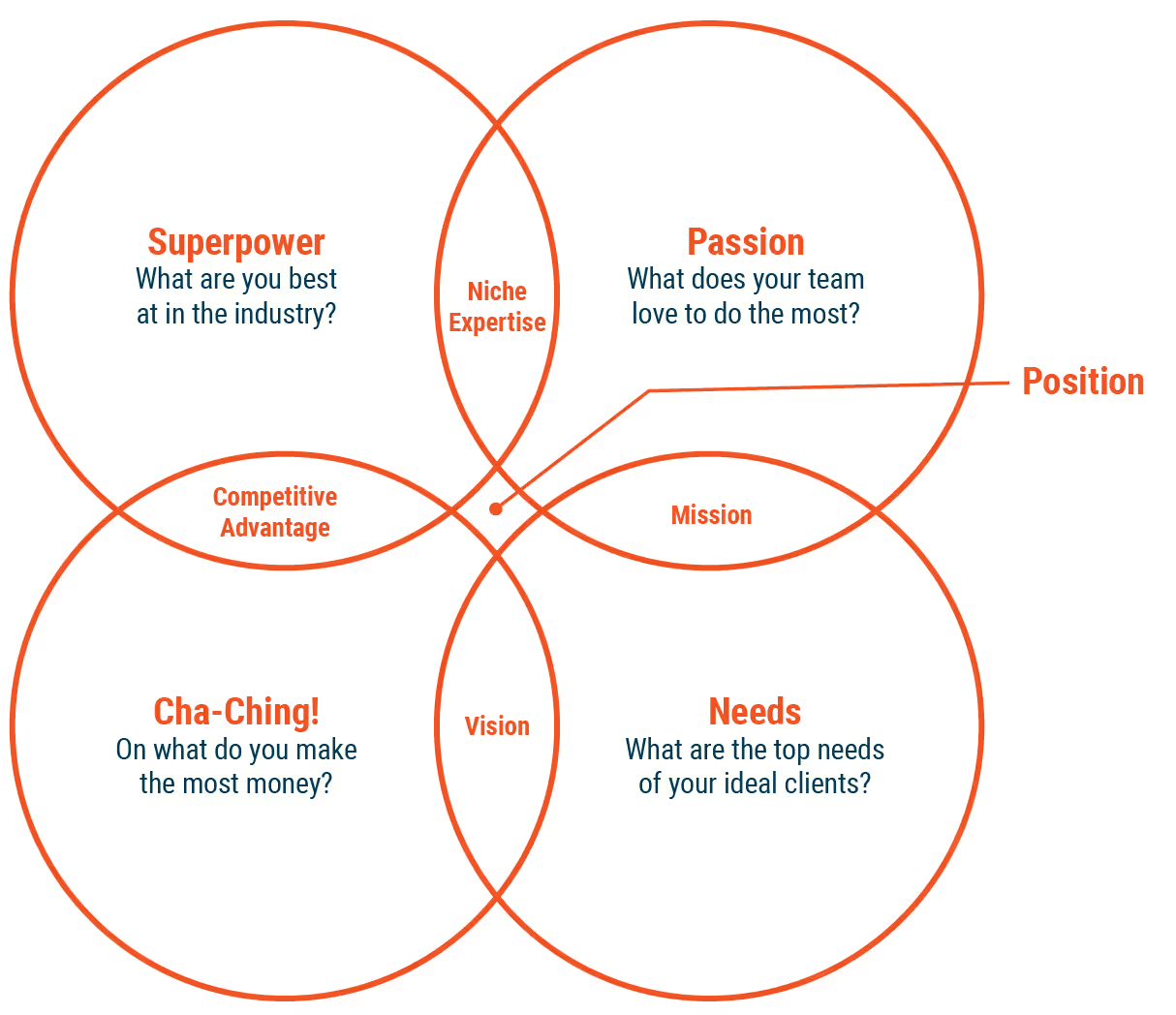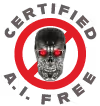Build a September Game Plan to Thrive in the New Year
September's the time to develop a plan to increase business opportunities come January, so we’ve laid out the steps we use during our autumn strategy sessions.

It's already mid-September, which means the kids are back in school, football has kicked off and it's time to dust off all the plans you made at the beginning of the year to map out a better biz dev strategy… and panic that you only have a quarter left to make it happen.
But never fear. Right now is the best time to bring your team together to nail down a new approach to maximize the opportunities come January.
You may have tried a September strategy session in the past and it didn’t produce any actionable results. After a lot of back and forth, your team just settled on a mediocre plan that would never stick, and walked away thinking it was a waste of time.
Just like the structures you construct, a strategic plan can’t be effective without a solid, well-designed foundation to support it. Done right, it doesn’t just define your business development process, it also unifies all team members behind a strong vision and purpose to drive it.
When we work with leadership teams of building companies, we always begin by building a strategic brand foundation before jumping into the tactics. To help you conduct a productive process and get your creative juices flowing, we’ve laid out the steps we use during our strategy sessions.
Workable Diagram
First, draw a diagram of four overlapping circles like shown below. This will give a structure to your planning session as you fill in all the components during your discussion.

Define your Audiences
Remember, your strategy session isn’t going anywhere if it’s driven by your personal opinions and preferences. It should instead center around your customers, and what matters to them. Every suggestion and resolution should keep their perspective in mind. What are their dilemmas, their fears and needs, and how can you solve them?
Create a detailed profile of each of your primary and secondary audience members. Determine their personalities, likes and dislikes, needs, concerns, habits and tastes. Make the persona as real as you can so your team can make a connection during the session. This hopefully helps the discussion stay objective and focused.
Agree on and write down the primary need of your audiences in the lower right hand circle. This is the first component in your foundation diagram, serving as the base touchpoint for the other components to come.
Proclaim Your Superpower
Next, ask yourself, what is it that we do better than anyone in the market to serve those needs of our customers? Remember “we provide great customer service” doesn’t count because that’s what everyone else says.
Maybe you have a special knowledge of horticulture to give you the competitive edge in landscaping. Maybe you were an early adopter of BIM to enhance your pre-construction services. Whatever it is, you should be confident it beats out your competition, and could be used to rescue your audience from their problems.
Record your superpower in the upper left quadrant, ready to be tested against the next component.
Unleash Your Passion
Your capabilities are one thing, but what do you really love to do? What brings your team the most fulfillment, whether it’s collaborating with clients, delivering projects, or just connecting with each other? What aspect of your work energizes you to show up every day, excited to contribute and grow?
Record your passion in the upper right corner of the diagram.
The Cha-ching Factor
Finally, Take a deep dive into which service or product brings in the most revenue. If commercial projects are significantly more profitable than residential ones, it might be time to reevaluate your focus. You may enjoy working with smaller contractors, but it could be time to seriously consider shifting your focus to larger, enterprise-level clients.
Plot this insight in the lower left section of your chart and compare it with the other elements. Does it align with your superpower, passion and ideal client needs? If not, you may need to rethink one or all of your components.
The Next Level
Next, it's time to start drilling down into your core brand foundation. Although you can start with any section in between the larger circles, let's start with the space between the bottom two quadrants: How You Make The Most Money (lower left) against your Audience Needs (lower right). By evaluating these two elements together, your vision will hopefully come into focus.
Vision
Your vision represents an ambitious goal that guides your company toward ultimate success. It provides your team with clarity, direction, and motivation to pursue a larger purpose.
Take time to analyze the connection between your ideal customers' needs and what generates the most revenue for your business. This will help you organize your priorities, eliminate distractions, and create a focused business development plan, rather than veering in multiple directions.
Mission
As your next matchup, evaluate your Passion (upper right) against your Audience Needs (lower right) to conjure up your mission statement.
While your vision focuses on a long term aspirational goal, your mission is how you go about achieving it on a day to day basis. Your mission statement is a declaration of your company’s purpose and core values. As a builder it should align your passion with what your ideal clients value most.
For example, if you love creating high-quality, sustainable buildings, your mission statement might reflect a commitment to delivering innovative and environmentally friendly solutions that meet your clients’ desires for both aesthetics and functionality.
By blending your passion and the needs of your audience, your mission statement helps attract clients who share your values and are seeking a company that can meet their specific needs.
Niche Expertise
In today's constantly changing environment, you can’t attract and close new business if you’re copying your competitors’ playbooks. To truly differentiate yourself, you must showcase niche expertise to demonstrate your value in their eyes.
If you juxtapose the top 2 quadrants, Your Superpower (top left) and Your Passion (top right) you uncover the essence of your niche expertise.
Being a subject matter expert is a powerful marketing tool in today’s fast-paced world, where tactics evolve rapidly. When prospective clients find your website as a solution to their problems, they’re more likely to return and choose you over competitors. By offering thought leadership in social media discussions, your audience will begin to see you as a trusted expert, rather than just another vendor.
Sharing your specialized knowledge is especially crucial as AI reshapes the marketing landscape. Search engine bots are now prioritizing authentic, credible content from reliable sources to feature in their results. Consistently providing valuable information can help you secure top placement—even above sponsored ads—earning you prominent visibility and recognition. That’s the definition of prime positioning!
Competitive Advantage
As I’ve mentioned before, when we ask leadership teams in building companies about their competitive advantage, they almost always say, “We provide great customer service. We get the job done right and on time, even if it means working on the weekend…” The truth is, that response won’t win you any new projects because it’s exactly what every other team is saying. There’s no real competitive edge in that.
By combining your Superpower (upper left) with your Cha-ching factor (lower left), you reveal your true competitive advantage—an essential piece of your strategic foundation. This should help your team see what truly sets you apart from competitors and how to showcase your value to the right prospects.
The Final Boss: Positioning
Aligning your Vision and Mission with your Niche Expertise and Competitive Advantage uncovers your unique position in the marketplace. This is the cornerstone of building a solid marketing and business development strategy, helping your team pinpoint the right audiences to go after, maintain consistent messaging on everything from social media to proposals, and select the most effective tactics and channels to boost your visibility.
This comprehensive ecosystem forms your Strategic Foundation. Your team now has a clear north star to pursue, with a unified understanding of your mission and the steps to achieve it. With this clarity, they can turn cold calls into warm leads and gain a competitive edge when crafting proposals or presentations by highlighting your expertise, passion, and deep understanding of your clients’ needs.
Lay Out a Content and Marketing Strategy
Now that your brand foundation is set, it’s time to plan your marketing strategy for the coming year. Consider the best channels to reach your target audience—whether it’s through social media, a revamped website, or strategic partnerships within your business community. Focus on creating content that not only showcases your projects but also your team, process, and company culture. We’ll go more in depth in a future article.
Get Your Team on Board
Finally, ensure that your entire team is aligned with the new brand strategy. Host workshops or training sessions to familiarize everyone with the brand’s new direction. This alignment will foster a sense of ownership and pride, making it easier to maintain consistency in your branding efforts throughout the year.
Of course, this is a simplified version of the full process, but hopefully it gives your team something you can work with to kick off a productive September strategy session soon.
By taking these steps in September, you’ll be well on your way to reducing year-end stress and positioning your company for growth in the new year. Remember, a strong brand isn’t built overnight, but with a clear strategy and consistent effort, you’ll be attracting better projects and standing out in your community in no time.
The four quadrant approach is a small snapshot of the services we at Rusty George apply when working with companies in the building industry—strategic, thoughtful, and tailored to your unique strengths. Let’s start building something great together.

Written by Rusty George, with no help from Artificial Intelligence.
Rusty George leads a branding, website design and marketing agency serving Seattle and Tacoma area construction companies, subcontractors, engineering and architecture firms, material fabricators and suppliers. His goal is to help the building industry become more attractive to the skilled workforce of the future.
MORE Insights
Unlock the secrets to transforming your construction company into a marketing powerhouse with Louder Builder.

2026 Starts Now. Five Reminders to Strengthen Your Year Ahead

Small Moves Now. Big Wins Next Year
SIGN UP FOR UPDATES
We will send you our latest insights from Louder Builder as they are released.
CONTACT US
Are you ready to begin your project today? Just have a few questions?
Either way, let’s talk.
